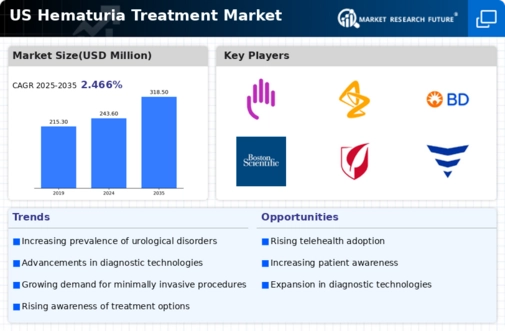The US Hematuria Treatment Market is characterized by significant competition due to the increasing incidence of hematuria, which serves as a critical symptom indicating various underlying health conditions, particularly those related to the urinary tract and kidneys. As healthcare awareness rises and diagnostic technologies advance, there is growing demand for effective treatment options tailored to address hematuria.
This competitive landscape involves not only established pharmaceutical companies but also newer entrants aiming to innovate and provide effective therapies. A key component of the market is the emphasis on research and development, which aims to enhance patient outcomes and expand treatment protocols based on the latest clinical evidence.
Bristol Myers Squibb has a prominent position within the US Hematuria Treatment Market, leveraging its extensive research portfolio focused on various therapeutic areas, including oncology and immunology. The company is well-regarded for its commitment to innovative solutions and has maintained a strong market presence due to a diverse pipeline of products aimed at treating conditions associated with hematuria.
The strengths of Bristol Myers Squibb lie in its robust reputation for quality and effectiveness, a strong focus on patient-centric approaches, and the capability to integrate clinical trials and medical advancements into their existing therapeutic modalities. These attributes have fortified the company's competitive standing in a market driven by the need for reliable and efficacious treatments.
AstraZeneca also plays a crucial role in the US Hematuria Treatment Market, possessing a robust portfolio of products designed to address urinary conditions. The company's key offerings often focus on specialized therapies that cater to the needs of patients experiencing hematuria, reflecting their commitment to addressing specific health challenges.
AstraZeneca's strengths are enhanced by a solid market presence strengthened through strategic partnerships, mergers, and acquisitions that expand their reach and product availability in the US market. Their dedication to research and development positions them to respond to emerging healthcare needs effectively.
By continuously enhancing their product lines and investing in innovative treatment solutions, AstraZeneca is well-poised to contribute further to the advancement of hematuria treatment options in the US.














